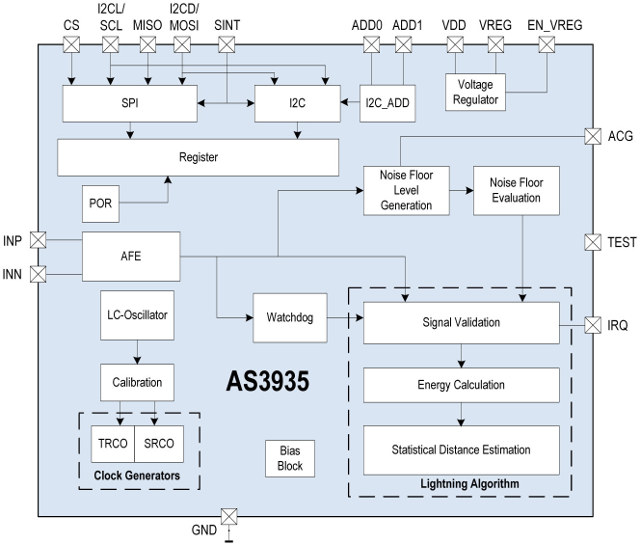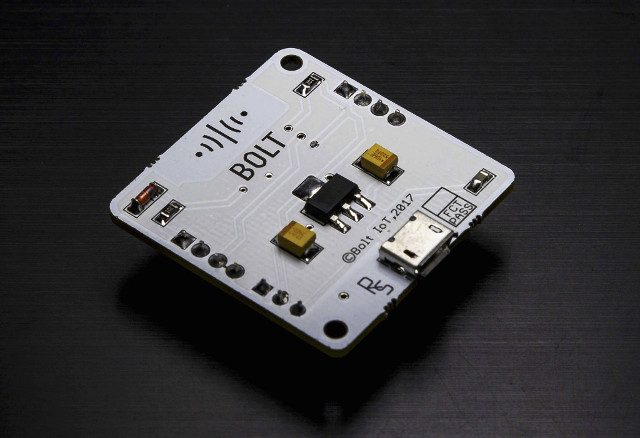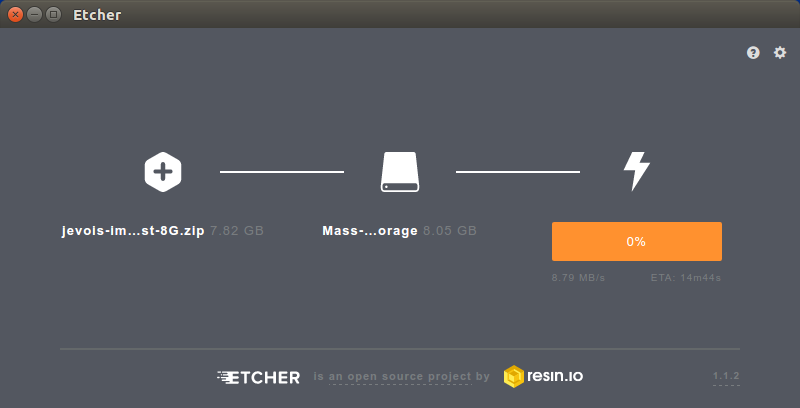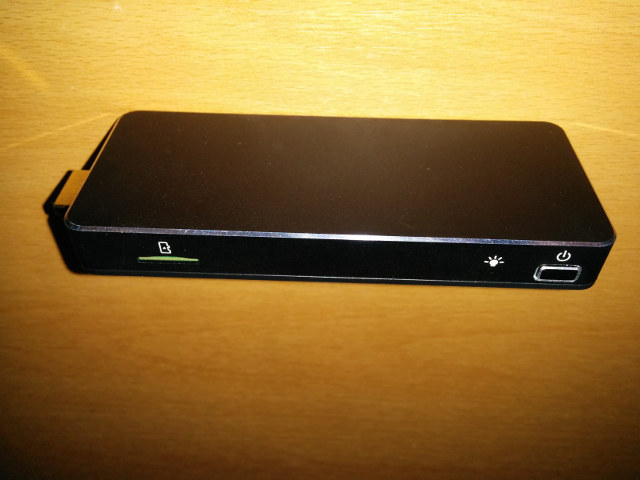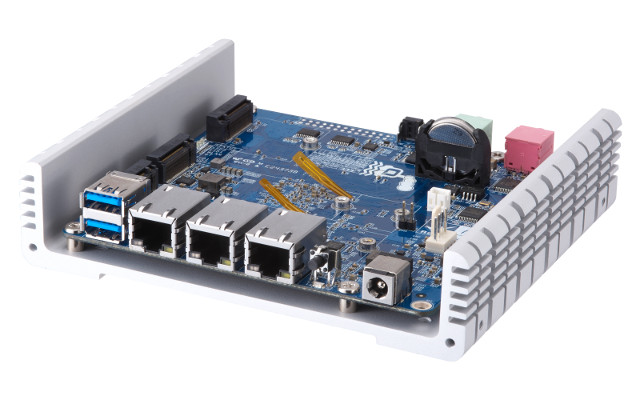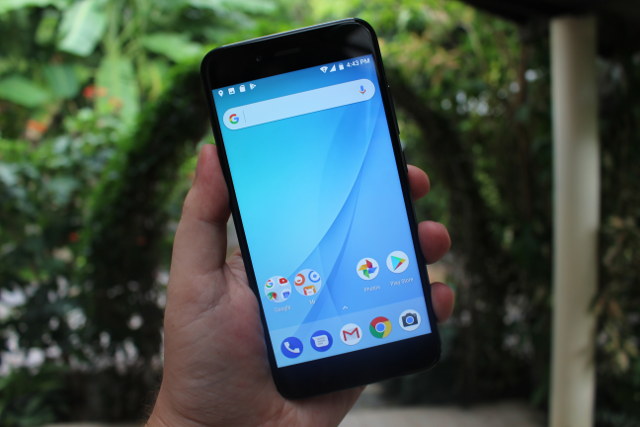Allwinner R16 with its lowly four Cortex A7 cores and Mali-400MP2 GPU would not normally come to mind when designing a gaming console. But Nintendo used the R16 processor twice in their retro gaming consoles: NES Classic and SNES Classic Edition. Clockwork, a startup based in Hangzhou, China, decided they could also do gaming console with the processor: Gameshell. But their product is quite different, as it’s both a portable console with 2.7″ display, and a development platform with the console based on Clockwork Pi development board, and an Atmel AVR (Arduino) based keypad board. Gameshell specifications: Clockwork Pi development board SoC – Alwinner R16-J quad core Cortex A7 processor @ 1.2 GHz with Mali-400MP2 GPU System Memory – 512MB or 1GB (in future revision of the board) Storage – 1x micro SDHC slot Video Output / Display I/F – 18-bit RGB display interface, micro HDMI (planned in revision of […]
Detect Lightning with Those AMS AS3935 “Thunder” Boards
Launched in 2012, AMS AS3935 Franklin lightning sensor is – at its name implies – a lightning sensing IC. The chip was designed for low power, portable or fixed wire-line applications, and beside detecting electrical emissions from lightning activity, it can also provide an estimation of the distance to the head of the storm from 40km away down to 1km, while filtering out other signals from motors, microwave ovens, etc… The chip interfaces via SPI or I2C to the host processor / micro-controller, and comes in a small MLPW-16 (4x4mm) package. Price is $3.55 per unit for 1k orders. Applications include wearables, golf carts, pool safety, portable GPS, bike computers, weather stations, uninterruptible power supplies, smart grid systems, environmental monitoring systems, etc… Basically, AS3935 can be used either for weather monitoring, or safety applications. I’ve found two maker boards with the chip: MikroElectronika Thunder Click board compatible with MikroBUS socket […]
Bolt IoT Platform Combines ESP8266, Mobile Apps, Cloud, and Machine Learning (Crowdfunding)
There are plenty of hardware to implemented IoT projects now, but in many cases a full integration to get data from sensors to the cloud requires going though a long list of instructions. Bolt IoT, an Indian and US based startup, has taken up the task to simplify IoT projects with their IoT platform comprised of ESP8266 Bolt WiFi module, a cloud service with machine learning capabilities, and mobile apps for Android and iOS. Bolt IoT module hardware specifications: Wireless Module – A.I Thinker ESP12 module based on ESP8266 WiSoC Connectivity – 802.11 b/g/n WiFi secured by WPA2 USB – 1x micro USB for power and programming Expansion – 4-pin female header and 7-pin female header with 5 digital I/Os, 1x analog I/O, and UART Misc – Cloud connection LED The hardware is not the most interesting part of Bolt IoT, since it offers similar functionalities as other ESP8266 boards. […]
JeVois-A33 Linux Computer Vision Camera Review – Part 2: Setup, Guided Tour, Documentation & Customization
Computer Vision, Artificial Intelligence, Machine Learning, etc.. are all terms we hear frequently those days. JeVois-A33 smart machine vision camera powered by Allwinner A33 quad core processor was launched last year on Indiegogo to bring such capabilities in a low power small form factor devices for example to use in robotics project. The company improved the software since the launch of the project, and has now sent me their tiny Linux camera developer kit for review, and I’ve already checked out the hardware and accessories in the first post. I’ve now had time to test the camera, and I’ll explained how to set it up, test some of the key features via the provided guided tour, and show how it’s possible to customize the camera to your needs with one example. Getting Started with JeVois-A33 In theory, you could just get started by inserting the micro SD card provided with […]
BBen MN10 TV Stick Review – Windows 10, Ubuntu 17.04, Benchmarks, and Kodi
The BBEN MN10 is the second Apollo Lake device to be released in the stick form-factor and on paper looks to have a lot to offer: It features an Apollo Lake N3350 SoC, an unusual 3GB of RAM, 64GB of storage and is cooled by a ‘mute’ fan. The devices comes in a plain box with a power adapter, and a leaflet style manual. It also included a three-pin UK power adapter, as this was advertised as the ‘BBen MN10 Mini PC – UK PLUG BLACK’. Looking at the detail specifications: We can immediately see discrepancies as the device does not have a ‘RJ45 Port Speed: 1000M LAN’ port, and was not supplied with ‘1 x HDMI Cable’ nor ‘1 x Remote Control’. Powering on the device and the ‘mute’ fan is also a miss-representation as it starts immediately and is noticeably noisy. It also runs at full speed regardless […]
Fingbox Helps You Monitor & Manage Devices on Your Network with Your iOS/Android Smartphone
Fing network scanner mobile app available for iOS and Android that allows you to discover which devices are connected to your Wi-Fi network, map devices, detect intruders, assess network security risks, troubleshoot network problems, and optimize wireless network performance. But in order to go beyond network monitoring, the developers have designed Ubuntu Core based Fingbox hardware to add features such as access control (e.g. parental control), analyze the usage of bandwidth for each clients, find Wi-Fi sweet spots/ avoid black spots, verify your Internet speed, monitor devices in your network, and protects it with a digital fence that works against threats. From a hardware perspective Fingbox is a round shaped Ethernet node with the following specifications: Processor – ARMv7 processor System Memory – 1GB RAM Connectivity – Gigabit Ethernet The Linux (Ubuntu Core) device just needs to be connected to your network via an Ethernet cable, and powered by its […]
QNAP QBoat Sunny IoT Mini Server Board Officially Announced with Annapurna Labs AL-314 ARM Processor
We first had a glance at QNAP QBoat Sunny at CES 2017. At the time, QNAP IoT development board was powered by an Intel AnyWAN GRX750 dual core Atom based processor with 2GB RAM, 4GB flash, three Gigabit Ethernet ports, some mSATA slot and so on. The company has now officially announced the board, but with a twist, as the Intel processor has been replaced by Annapurna Labs (now part of Amazon) AL-314 quad core ARM Cortex-15 processor instead, and left most of the other features pretty much unchanged. QBoard Sunny board specifications: Processor – Annapurna Labs AL-314 quad core ARM Cortex-15 processor up to 1.7 GHz System Memory – 2GB DDR3L Storage – 512MB NAND flash, 2x M.2 2260/2280 SATA slots for SSDs (Key M) Network connectivity – 3x Gigabit Ethernet USB – 2x USB 3.1 Gen1 ports Audio – 3.5mm audio out jack, 3.5mm audio in jack Expansion […]
Xiaomi Mi A1 Smartphone Review – Part 2: Android 7.1.2 Firmware
Google recently announced several Android One smartphones, which are supposed to get 2 years of firmware updates, including to the latest version of Android, such as HTC U11 Life and Android One Moto X4. Many of those phones are limited to some specific countries, but Xiaomi Mi A1 will be launched in over 40 countries, and thanks to Chinese online shops is really available worldwide. GearBest sent me the latter last month, and in the first part of Xiaomi Mi A1 review I simply went through unboxing, booted the phone, perform an OTA update, and ran Antutu 6.x on the phone for a quick estimate of performance. Since then, I’ve had around four weeks to play with the smartphone running Android 7.1.2 (still), so I’m ready to report my experience in the second part of the review. General Impressions In the past year, I used Vernee Apollo Lite smartphone powered […]



